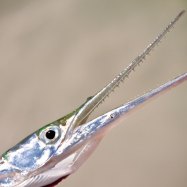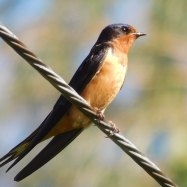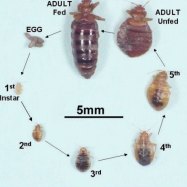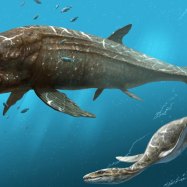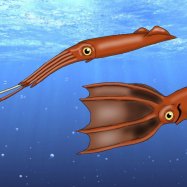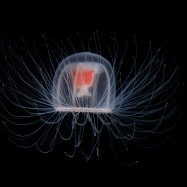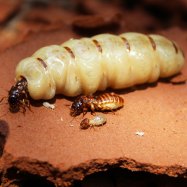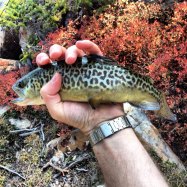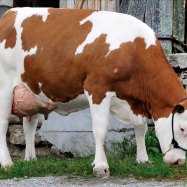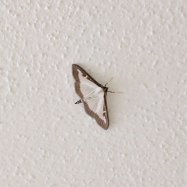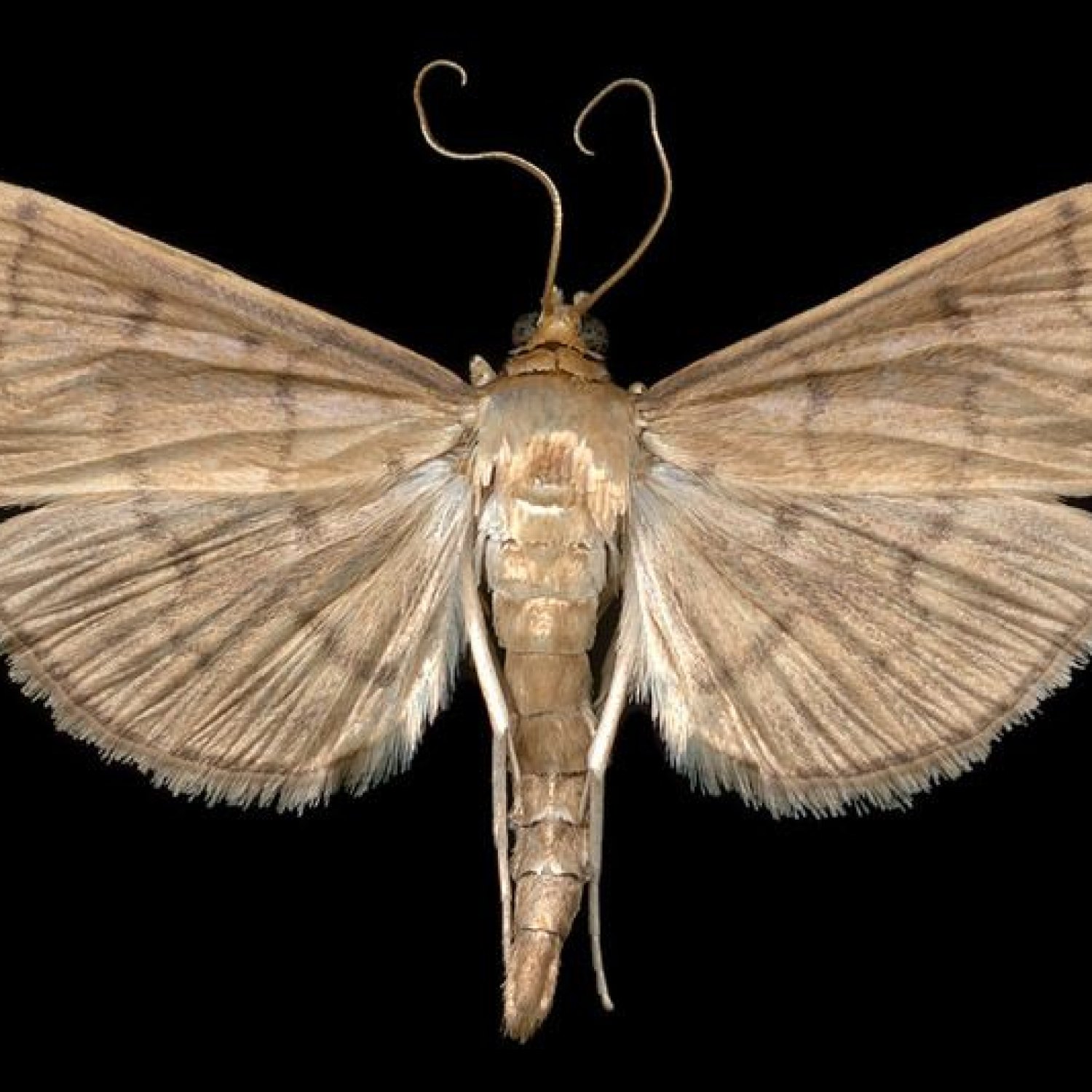
European Corn Borer
14-19 mm
The European Corn Borer is a notorious pest that can destroy corn crops worldwide. Measuring at 14-19 mm in length, this cylindrical-shaped insect belongs to the Crambidae family. Farmers often struggle to control these pests due to their ability to spread quickly. Protect your corn harvest from these tiny but destructive creatures by implementing proper pest management practices. #EuropeanCornBorer #PestControl #Crambidae #CornCrops
Animal Details Summary:
Common Name: European Corn Borer
Kingdom: Animalia
Habitat: Agricultural fields, particularly cornfields
The European Corn Borer: An Intriguing Insect of Agricultural Fields
The world of insects is a vast and awe-inspiring one, with over 1 million identified and named species. Among these fascinating creatures is the European Corn Borer (Ostrinia nubilalis), a unique insect that has captured the attention of scientists and farmers alike due to its role in agricultural fields and its impressive adaptation skills. In this article, we will take a closer look at this intriguing insect, exploring its habitat, feeding methods, geographical distribution, and more.A Closer Look into the European Corn Borer's Taxonomy
Before we dive into the details of this fascinating insect, let's first take a closer look at its taxonomy European Corn Borer. The European Corn Borer belongs to the kingdom Animalia, the phylum Arthropoda, and the class Insecta. It is further classified under the order Lepidoptera (butterflies and moths) and the family Crambidae.European Corn Borer's Habitat and Feeding Method
As its name suggests, the European Corn Borer is commonly found in Europe, particularly in countries such as France, Germany, and Italy. However, it is also present in other parts of the world, including North Africa, Asia, and North America. Its widespread distribution is due to its unique feeding method, which we will explore in detail in this section.The European Corn Borer is a herbivore, meaning it feeds on plants. Its main food source is corn, making it a prominent pest in agricultural fields, particularly in cornfields. These insects have a fascinating ability to channel through the stem of a corn plant, weakening and ultimately destroying the entire plant. As a result, severe infestations of European Corn Borers can lead to significant yield loss for farmers Eastern Box Turtle.
A Unique Coloration and Body Shape
On average, the European Corn Borer measures between 14 to 19 millimeters in length, making it a relatively small insect. However, its unique coloration and body shape make it stand out in the world of insects. The adult European Corn Borer has a distinct yellowish-brown to gray color, making it easily recognizable in the field. It also has a cylindrical body shape, with a long and narrow appearance.The Remarkable Adaptation Skills of the European Corn Borer
One of the most fascinating aspects of the European Corn Borer is its remarkable adaptation skills. This insect has evolved to survive in a variety of environments, making it a highly adaptable species. As mentioned earlier, its widespread geographical distribution is a result of its ability to adapt to different climatic conditions.Moreover, the European Corn Borer is known for its ability to develop resistance to insecticides quickly. This makes it a challenging pest to control, as farmers are continually facing the threat of decreasing effectiveness of insecticides. As a result, scientists and researchers are constantly working to find new and more effective ways to control this pest.
The Life Cycle of the European Corn Borer
Like most insects, the European Corn Borer's life cycle consists of four stages: egg, larva, pupa, and adult. Understanding the life cycle of this insect is crucial in finding effective ways to control its population and prevent damage to agricultural fields.Stage 1: Egg
The first stage of the European Corn Borer's life cycle is the egg stage. The female moth lays her eggs on the underside of corn leaves, where they are relatively protected from predators and environmental factors. On average, a female moth can lay between 400 to 500 eggs in her lifetime.Stage 2: Larva
Once the eggs hatch, the larval stage begins. The larvae, also known as corn borers, start feeding on the corn plant, tunneling their way through the stem until they reach the middle of the plant. This tunneling action weakens the plant, making it more susceptible to disease and other pests.Stage 3: Pupa
After completing their feeding, the larvae enter the pupal stage, forming a cocoon around themselves for protection. During this stage, the insect undergoes a transformation, developing into an adult moth.Stage 4: Adult
The final stage of the European Corn Borer's life cycle is the adult stage. The adult moth emerges from the cocoon and begins the process of reproduction, starting the cycle all over again.The Impact of the European Corn Borer on Agriculture
While the European Corn Borer may seem like a small and insignificant insect, its impact on agriculture is significant. This pest is responsible for causing significant yield losses in corn crops, ranging from 5 to 20 percent. In addition, it also contributes to the spread of disease in plants, causing further damage and economic loss. As a result, farmers are continuously seeking effective methods to control this pest and protect their crops.Controlling the European Corn Borer Population
Given the significant damage that the European Corn Borer can cause to crops, it is essential to find effective methods to control its population. Traditionally, farmers have relied on insecticides to control the pest. However, as mentioned earlier, the European Corn Borer has developed resistance to many insecticides, making this method less effective.Today, researchers are exploring alternative methods to control this pest, with a focus on biological control. One promising solution is the use of parasitic wasps, which lay their eggs on the eggs of the European Corn Borer, preventing them from hatching. This method has shown promising results and could be the key to controlling the population of this pest in the future.
The Potential of Genetic Engineering
Another potential solution for controlling the European Corn Borer population is through genetic engineering. Scientists are currently working on developing transgenic corn plants, which are resistant to the pest. These modified plants produce a protein that is toxic to the European Corn Borer, effectively killing it when it feeds on the plant. While this method is still in the research and development phase, it has a lot of potential for helping farmers control the pest in a more sustainable and environmentally friendly way.Final Thoughts
The European Corn Borer may seem like an ordinary insect, but its unique adaptations, widespread distribution, and impact on agriculture make it a remarkable creature. This pest reminds us of the complex and intricate balance of nature and the constant battle between pests and their predators. While controlling the European Corn Borer's population may be a challenge, it is also an opportunity for scientists and researchers to develop innovative solutions and techniques that can help us better adapt to our ever-changing environment. So, proper monitoring and implementation of effective control strategies are essential to protect our crops and increase our agricultural productivity.

European Corn Borer
Animal Details European Corn Borer - Scientific Name: Ostrinia nubilalis
- Category: Animals E
- Scientific Name: Ostrinia nubilalis
- Common Name: European Corn Borer
- Kingdom: Animalia
- Phylum: Arthropoda
- Class: Insecta
- Order: Lepidoptera
- Family: Crambidae
- Habitat: Agricultural fields, particularly cornfields
- Feeding Method: Herbivore
- Geographical Distribution: Europe, North Africa, Asia, and North America
- Country of Origin: Europe
- Location: Worldwide
- Animal Coloration: Yellowish-brown to grey
- Body Shape: Cylindrical
- Length: 14-19 mm
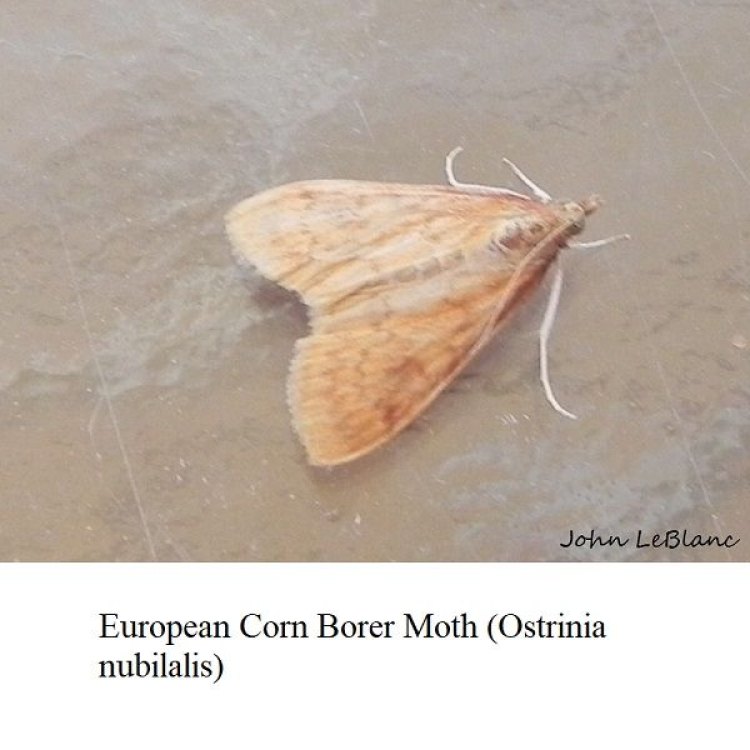
European Corn Borer
- Adult Size: Small to medium-sized
- Average Lifespan: 3-4 weeks
- Reproduction: Sexual
- Reproductive Behavior: Males attract females using pheromones
- Sound or Call: No sound production
- Migration Pattern: Migratory over short distances
- Social Groups: Solitary
- Behavior: Nocturnal
- Threats: Pesticide use and natural predators
- Conservation Status: Not Evaluated
- Impact on Ecosystem: Crop damage
- Human Use: Pest to corn and other crops
- Distinctive Features: Yellow or white spots on the forewings
- Interesting Facts: The European Corn Borer is considered a major pest of corn crops, causing significant economic losses.
- Predator: Bats, birds, spiders, and parasitic wasps
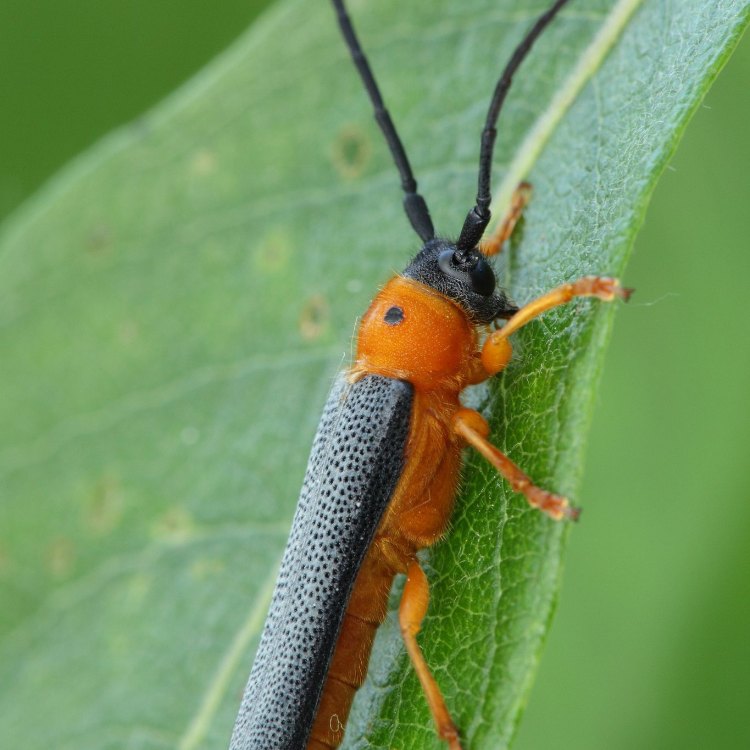
Ostrinia nubilalis
The Troublesome European Corn Borer: A Tiny Insect with a Big Impact
The European Corn Borer (Ostrinia nubilalis) is a small to medium-sized moth that is native to Europe and Asia. However, it has been introduced to North America and is now considered a major agricultural pest. This insect may seem harmless due to its small size, but its impact on crops has caused significant economic losses. In this article, we will delve deep into the world of the European Corn Borer and learn about its distinctive features, behavior, and impact on the ecosystem PeaceOfAnimals.Com.Adult Size and Average Lifespan
The adult European Corn Borer has a wingspan of about 1 inch, with females being slightly larger than males. Despite its relatively small size, this moth has caused major damage to corn and other crops, making it a big threat to the agricultural industry.On average, the European Corn Borer has a lifespan of 3 to 4 weeks. During this short period, they undergo the process of reproduction, laying eggs, and feeding on crops. Their short lifespan makes it difficult for farmers to control their population, as they can quickly reproduce and spread to new crops within a short period.
Reproduction and Reproductive Behavior
The European Corn Borer reproduces sexually, with males and females coming together for mating. Males use pheromones to attract females, which are chemical substances that act as a natural perfume to female moths. This behavior is essential for the continuation of their species, but it is also one of the factors that make them a major pest to crops.Sound or Call and Migration Pattern
Unlike some other insects, the European Corn Borer does not produce any sound or call Elegant Tern. They communicate through their distinctive odor and visual cues, such as their yellow or white spots on their forewings.This moth is also known to be migratory over short distances. However, their migration pattern may not be as significant as other insect species, as they can easily spread through transportation of infested crops.
Social Groups and Behavior
The European Corn Borer is a solitary insect, meaning they do not form any social groups. They are nocturnal, which means they are active at night and rest during the day. This behavior allows them to hide from natural predators and human interventions.Their nocturnal behavior also poses a challenge for farmers, as they are not easily detectable during the daytime, making it difficult to control their population.
Threats and Conservation Status
The European Corn Borer faces threats from both natural predators and human interventions. Pesticide use is one of the most significant threats to their population. While pesticides may be effective in reducing their numbers, they also harm other beneficial insects and pollinators, leading to an imbalance in the ecosystem.They also face natural predators, such as bats, birds, spiders, and parasitic wasps. These predators play a crucial role in controlling the population of the European Corn Borer. However, their effectiveness may be limited, as these moths have the ability to hide and camouflage well.
Currently, the conservation status of the European Corn Borer is not evaluated. While they may seem like a nuisance to farmers, they are still an essential part of the ecosystem, and their sudden disappearance could have adverse effects.
Impact on Ecosystem and Human Use
The European Corn Borer may be considered a pest to farmers, but they play a crucial role in the ecosystem. As larvae, they feed on the stems and leaves of plants, including corn, tomatoes, potatoes, and soybeans. This reduces the vigor of the plants, making them more susceptible to diseases and reducing their crop yields.The impact of the European Corn Borer on crops is not limited to economic losses. It also affects the ecosystem as a whole. As they feed on crops, they reduce the available food sources for other insects, birds, and other animals, potentially disrupting the balance of the ecosystem.
Humans also use the European Corn Borer, albeit unintentionally. They have been used as a model organism in scientific studies, providing valuable insights into the world of insect biology and behavior.
Distinctive Features and Interesting Facts
The European Corn Borer has distinctive features that distinguish it from other moth species. Its forewings have yellow or white spots, making them stand out from other insects. These spots also serve as a warning to predators, indicating that they may be poisonous or harmful.Some interesting facts about the European Corn Borer include:
- They were accidentally introduced to North America in the early 1900s through infested corn seeds.
- They are not very strong fliers and rely on air currents to move to new areas.
- They are also known to develop resistance to pesticides, making it challenging to control their population.
Conclusion
In conclusion, the European Corn Borer may seem like a tiny insect, but its impact on crops and the ecosystem is significant. Their distinctive features, behavior, and short lifespan make them difficult to control, posing challenges to farmers and researchers alike. While they may be considered a major pest, we must also acknowledge their role in the ecosystem and find sustainable solutions for their control. Only by understanding and respecting the delicate balance of nature, can we coexist with insects like the European Corn Borer.
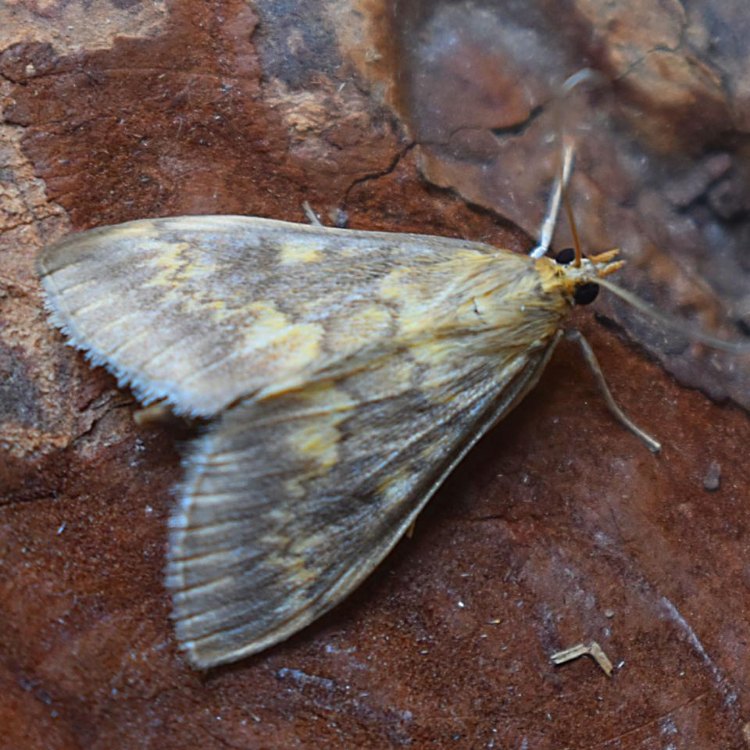
The European Corn Borer: An Intriguing Insect of Agricultural Fields
Disclaimer: The content provided is for informational purposes only. We cannot guarantee the accuracy of the information on this page 100%. All information provided here may change without prior notice.

